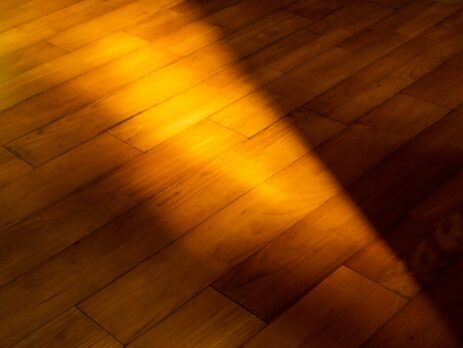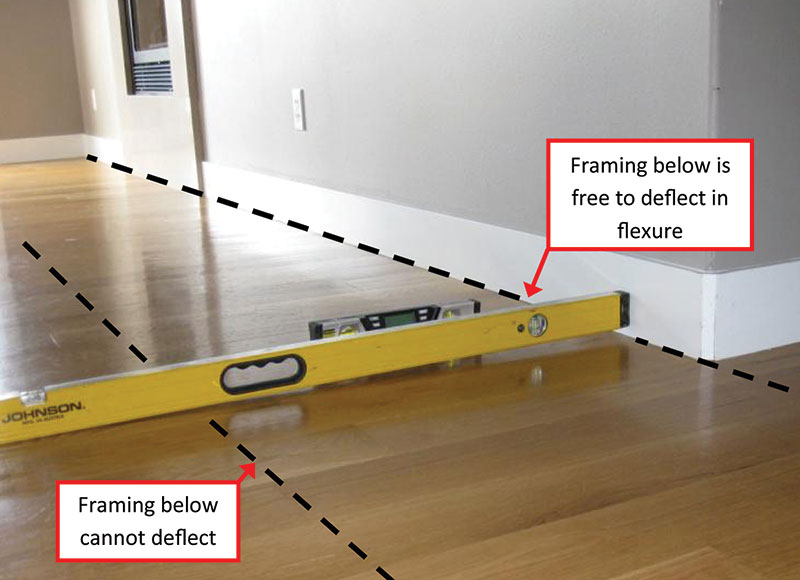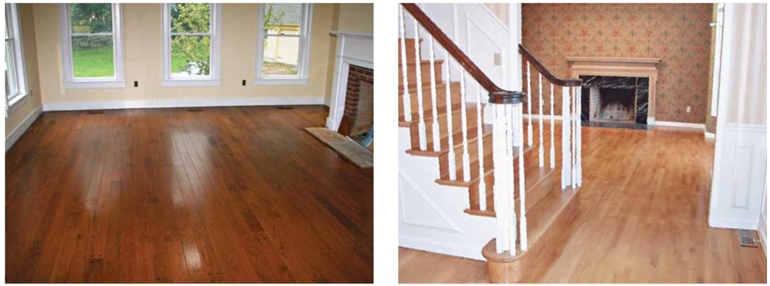Transform Your Home with the Timeless Elegance of Hardwood Flooring
The Timeless Appeal of Hardwood Floors
Hardwood floors have been a popular choice for centuries, and their timeless appeal continues to captivate homeowners today. The history of hardwood floors dates back to ancient times, where they were used in palaces and castles to showcase wealth and luxury. Over the years, hardwood floors have evolved and adapted to different styles and trends, but their elegance and durability have remained constant.
Today, hardwood floors are still a highly sought-after flooring option for homeowners. They offer a classic and sophisticated look that can enhance the beauty of any space. Whether you prefer a traditional or modern aesthetic, hardwood floors can complement any style of home décor. With their natural warmth and rich tones, hardwood floors create a welcoming and inviting atmosphere in any room.
The Advantages of Choosing Hardwood Flooring for Your Home
One of the main advantages of choosing hardwood flooring for your home is its durability and longevity. Unlike other types of flooring, such as carpet or laminate, hardwood floors can withstand heavy foot traffic and last for decades with proper care. They are resistant to scratches, stains, and dents, making them an ideal choice for high-traffic areas like living rooms and hallways.
In addition to their durability, hardwood floors are also easy to clean and maintain. Unlike carpet, which can trap dirt and allergens, hardwood floors can be easily swept or vacuumed to keep them looking clean and fresh. Spills can be quickly wiped away without leaving behind stains or odors. With regular care and maintenance, hardwood floors can retain their beauty for years to come.
Another advantage of hardwood flooring is that it adds value to your home. Real estate agents often highlight the presence of hardwood floors as a selling point because they are considered a premium feature. Potential buyers are willing to pay more for a home with hardwood floors because they are seen as a long-term investment that adds beauty and value to the property.
Furthermore, hardwood floors are versatile and timeless. They can be stained or finished in a variety of colors and textures to match any style of home décor. Whether you prefer a light, natural finish or a dark, rich tone, there is a hardwood floor option that will suit your personal taste. Additionally, hardwood floors never go out of style, making them a wise investment that will continue to enhance the beauty of your home for years to come.
Different Types of Hardwood Floors and Their Characteristics
When choosing hardwood flooring for your home, it’s important to consider the different types available and their unique characteristics. The two main types of hardwood floors are solid hardwood and engineered hardwood.
Solid hardwood is made from a single piece of wood and is known for its durability and longevity. It can be sanded and refinished multiple times, allowing it to last for generations. Solid hardwood is available in a variety of wood species, including oak, maple, cherry, and walnut, each with its own distinct grain pattern and color variations.
Engineered hardwood flooring is made from multiple layers of wood veneer that are bonded together. It is more resistant to moisture and temperature fluctuations than solid hardwood, making it suitable for areas like basements or kitchens. Engineered hardwood can also be sanded and refinished, although not as many times as solid hardwood.
In addition to the type of hardwood, there are also different wood species to choose from, each with its own unique characteristics. Oak is one of the most popular choices due to its durability and versatility. Maple is known for its light color and smooth grain pattern. Cherry has a rich, reddish-brown color that darkens over time. Walnut has a deep, chocolate brown color with a straight grain pattern.
When it comes to finishes and textures, there are several options to choose from. A satin or matte finish gives the floor a more natural look, while a high-gloss finish adds a touch of elegance and sophistication. Textures like hand-scraped or wire-brushed can add depth and character to the floor, giving it a more rustic or vintage look.
Choosing the Right Hardwood Floor for Your Home Décor
When choosing hardwood flooring for your home, it’s important to consider how it will match with your existing home décor. The color and finish of the hardwood floor should complement the overall style and aesthetic of your space.
If you have a traditional or classic home décor, a darker hardwood floor with a glossy finish can add a touch of elegance and sophistication. Darker wood species like walnut or mahogany can create a warm and inviting atmosphere. Pairing the dark hardwood floor with lighter furniture and accessories can create a beautiful contrast.
For a more modern or contemporary home décor, lighter hardwood floors with a matte or satin finish can create a clean and minimalist look. Lighter wood species like oak or maple can brighten up the space and make it feel more open and airy. Pairing the light hardwood floor with sleek furniture and minimalistic accessories can create a cohesive and stylish look.
When choosing the color and finish of your hardwood floor, it’s also important to consider the size and layout of your home. Lighter colors and finishes can make small spaces appear larger, while darker colors can make large spaces feel more cozy and intimate. Additionally, the direction in which the hardwood planks are installed can also affect the perception of space. Installing the planks parallel to the longest wall can make the room appear longer, while installing them perpendicular to the longest wall can make the room appear wider.
The Benefits of Hardwood Floor Maintenance and Care

One of the benefits of choosing hardwood flooring for your home is that it requires minimal maintenance and care. With regular cleaning and proper care, hardwood floors can retain their beauty for years to come.
Regular cleaning is essential to keep hardwood floors looking their best. Sweeping or vacuuming the floor on a regular basis will remove dirt and debris that can scratch the surface. It’s important to use a soft-bristle broom or a vacuum with a hardwood floor attachment to avoid scratching the floor.
In addition to regular cleaning, it’s also important to prevent scratches and damage to the hardwood floor. Placing felt pads on the bottom of furniture legs can prevent scratches when moving furniture. Using rugs or mats in high-traffic areas can also protect the floor from wear and tear. It’s important to avoid dragging heavy furniture or sharp objects across the floor, as this can cause scratches or dents.
If your hardwood floor does get scratched or damaged, it can be refinished and restored to its original beauty. Refinishing involves sanding down the top layer of the floor and applying a new finish. This process can remove scratches, stains, and imperfections, giving the floor a fresh and new look. It’s recommended to hire a professional for refinishing, as they have the expertise and equipment to ensure a high-quality result.
How to Install Hardwood Floors in Your Home
Installing hardwood floors in your home can be a DIY project or you can hire a professional for installation. If you choose to install the floors yourself, it’s important to follow the proper steps and techniques to ensure a successful installation.
Before installing hardwood floors, it’s important to prepare the subfloor. The subfloor should be clean, dry, and level. Any existing flooring should be removed, and any imperfections in the subfloor should be repaired or leveled out. It’s also important to acclimate the hardwood planks to the room’s temperature and humidity for at least 48 hours before installation.
Once the subfloor is prepared, you can begin installing the hardwood planks. Start by laying down an underlayment or vapor barrier to protect against moisture. Then, begin laying the planks along the longest wall, leaving a 1/2-inch gap between the planks and the wall to allow for expansion. Use a pneumatic flooring nailer or a flooring stapler to secure the planks to the subfloor. Continue installing the planks row by row, making sure to stagger the joints for a more stable and visually appealing result.
After the hardwood floors are installed, it’s important to allow them to acclimate to the room’s temperature and humidity for at least 48 hours before walking on them or placing furniture on them. This will allow the wood to adjust and prevent any warping or buckling.
The Cost of Hardwood Floors: Is It Worth the Investment?
The cost of hardwood floors can vary depending on several factors, including the type of hardwood, the wood species, the finish, and the installation method. While hardwood floors may have a higher upfront cost compared to other flooring options, they are considered a long-term investment that can add value to your home.
Factors that can affect the cost of hardwood floors include the quality of the wood, with higher-quality wood typically costing more. Exotic wood species like Brazilian cherry or teak can also be more expensive than domestic species like oak or maple. The finish and texture of the hardwood floor can also affect the cost, with high-gloss finishes or hand-scraped textures typically costing more.
When comparing the cost of hardwood floors to other flooring options, it’s important to consider the long-term value and return on investment. While carpet or laminate may have a lower upfront cost, they typically need to be replaced more frequently and do not add as much value to your home. Hardwood floors, on the other hand, can last for decades with proper care and maintenance, making them a wise investment that can increase the resale value of your home.
Hardwood Floors vs. Other Flooring Options: A Comparison
When choosing flooring for your home, it’s important to consider the advantages and disadvantages of each option. While hardwood floors have many benefits, they may not be the right choice for every homeowner.
Carpet is a popular choice for bedrooms and living rooms because it provides warmth and comfort underfoot. However, carpet can trap dirt, allergens, and odors, making it more difficult to clean and maintain. It also has a shorter lifespan compared to hardwood floors and may need to be replaced more frequently.
Tile is a durable and waterproof option that is often used in kitchens and bathrooms. It comes in a variety of colors and patterns, allowing for endless design possibilities. However, tile can be cold and hard underfoot, making it less comfortable than hardwood floors. It can also be more difficult to install and repair.
Laminate is a cost-effective alternative to hardwood floors that mimics the look of real wood. It is durable and easy to clean, making it a popular choice for high-traffic areas. However, laminate does not have the same longevity or value as hardwood floors. It cannot be refinished or restored like hardwood floors, and it may need to be replaced more frequently.
The Environmental Benefits of Using Hardwood Floors
In addition to their beauty and durability, hardwood floors also offer several environmental benefits. They are a sustainable and renewable resource that can be harvested responsibly without depleting forests. Many hardwood flooring manufacturers practice responsible forestry management and use sustainable harvesting practices to ensure the long-term health of forests.
Hardwood floors also have a low carbon footprint compared to other flooring options. The production process for hardwood floors requires less energy and emits fewer greenhouse gases compared to the production of carpet or laminate. Additionally, hardwood floors can help improve indoor air quality by reducing the amount of dust, allergens, and volatile organic compounds (VOCs) in the air.
At the end of their lifespan, hardwood floors are biodegradable and recyclable. They can be repurposed or recycled into other wood products, reducing waste and minimizing their impact on the environment. This makes hardwood floors a sustainable and eco-friendly choice for homeowners who are conscious of their environmental footprint.
Why Hardwood Floors are a Timeless and Elegant Choice for Your Home
In conclusion, hardwood floors offer a timeless and elegant choice for homeowners looking to enhance the beauty of their space. With their durability, easy maintenance, and ability to add value to your home, hardwood floors are a smart investment that can last for generations.
Whether you choose solid hardwood or engineered hardwood, there are a variety of wood species, finishes, and textures to choose from to match your home décor. By considering the size and layout of your home, as well as your personal style preferences, you can choose the perfect hardwood floor that will enhance the beauty of your space.
With regular cleaning and proper care, hardwood floors can retain their beauty for years to come. By following simple maintenance tips and preventing scratches and damage, you can ensure that your hardwood floors continue to look their best. If your hardwood floor does get scratched or damaged, it can be refinished and restored to its original beauty.
While the cost of hardwood floors may be higher compared to other flooring options, they offer a long-term value and return on investment. Hardwood floors are a timeless and elegant choice that can add beauty and value to your home. With their environmental benefits and sustainability, hardwood floors are also a responsible choice for homeowners who are conscious of their environmental footprint.
In conclusion, hardwood floors have stood the test of time and continue to be a popular choice for homeowners today. Their durability, easy maintenance, versatility, and timeless appeal make them an excellent investment for any home. Whether you prefer a traditional or modern aesthetic, there is a hardwood floor option that will suit your personal style and enhance the beauty of your space. So, if you’re looking to add elegance and sophistication to your home, consider choosing hardwood floors.
If you’re considering installing hardwood floors, it’s important to understand the various factors that can affect their performance and longevity. One key aspect is the floor framing system, which provides the foundation for your hardwood floors. In a related article by Kapriz Hardwood Floors, they discuss the importance of a sturdy and properly installed floor framing system. They provide valuable insights and tips on how to ensure your floor framing system is stiff, flat, and dry, which is crucial for the successful installation of hardwood floors. To learn more about this topic, check out their article here.
Kapriz is one of the Best Hardwood Flooring Stores in the United States.
Call Us for a specific flooring you’re looking for, Visit our Showroom, or simply email us!







